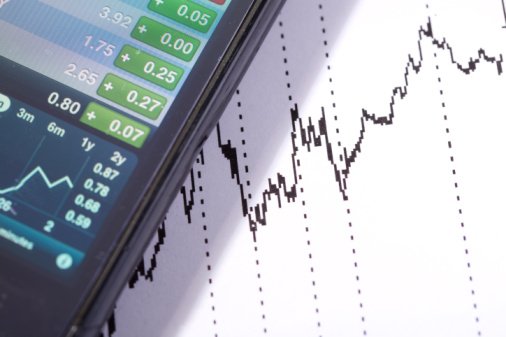by Collin Martin, CFA, Fixed Income Strategist, Schwab Center for Financial Research
Key Points
- Investment-grade corporate bonds: Consider a below-benchmark average duration, and be wary of the lowest rungs of the investment-grade rating scale.
- High-yield corporate bonds: Consider “higher-rated” high-yield bonds, while limiting exposure to bonds rated “CCC” and below, as defaults are still likely in 2021.
- Preferred securities: They can still make sense for investors looking for higher income and yields, but prices are very high today. There’s little room for price appreciation, and plenty of downside if the economic outlook deteriorates.
- Bank loans: Coupon rates are unlikely to rise anytime soon, and the default rate is likely to remain elevated despite bank loans’ “senior” and “secured” characteristics.
It was a bumpy ride for corporate bond investors this year. After the sharp, pandemic-driven selloff in February and March, total returns for most corporate bond investments have climbed their way back into positive territory.
Despite a rough start, year-to-date total returns are still positive

Source: Bloomberg. Total returns from 12/31/2019 through 11/16/2020. Indexes represented are the Bloomberg Barclays U.S. Corporate Bond Index, Bloomberg Barclays U.S. Corporate High-Yield Bond Index, ICE BofAML Fixed Rate Preferred Securities Index, and the S&P/LSTA Leveraged Loan 100 Total Return Index. Total returns assume reinvestment of interest and capital gains. Indexes are unmanaged, do not incur fees or expenses, and cannot be invested in directly. Past performance is no indication of future results.
We don’t believe 2021 will be as bumpy as this past year, and corporate bond investments appear relatively attractive today. Investment-grade corporate bonds can help boost the overall income and yield of a portfolio without taking on too much additional risk, while high-yield corporate bonds and preferred securities should be considered—in moderation—for those investors with a more aggressive risk tolerance and can ride out the ups and downs. There are still risks, however, especially as the number of COVID-19 cases rise as we enter the winter months, but we believe that there are plenty of supporting factors that could prevent prices from plunging as they did in the first quarter of this year.
Three supporting factors for 2021
In 2021, we expect fewer ups and downs compared to 2020. We believe that U.S. Treasury yields are likely to rise modestly this year, which could negatively impact some corporate bond investments if their yields were to rise as well. While interest rate risk appears to be elevated (the risk that prices fall due to a rise in Treasury yields), we believe that the fundamental backdrop for corporate bonds is still supportive, for the following three reasons:
- Economic growth. After plunging in the first and second quarters, the U.S. gross domestic product surged in the third quarter. The trend of economic growth is likely to level out from here, but it appears to be moving in the right direction. Additional fiscal aid would likely help the economy continue to recover.
- Vaccine optimism. If COVID-19 vaccines were approved and readily available sooner rather than later, that could help many troubled sectors, like hotels and restaurants, get back to something that resembles something closer to “normal.”
- Liquidity. Corporations have issued a record-breaking amount of debt this year. That poses a risk down the road when that growing amount of debt needs to be repaid or refinanced, but it has helped companies strengthen their liquidity profiles in the short term. The introduction of the Federal Reserve’s corporate bond-buying facilities allowed companies to refinance maturing debt with much longer-term debt, or simply issue new debt with the intention to keep the proceeds as cash on the balance sheet. U.S. corporations now have ample liquid assets, which should help in case the outlook deteriorates and corporate profits were to decline.
Corporate liquid assets have surged

Source: Bloomberg, using quarterly data as of 2Q2020. FOF Nonfarm Nonfinancial Corporate Business Liquid Assets NSA (NFCBCBLA Index).
There is one wild card as it relates to the corporate bond outlook: the Fed’s corporate credit facilities. Announced on March 23rd, the Primary and Secondary Market Corporate Credit Facilities allow the Fed to buy corporate bonds and corporate bond exchange-traded funds (ETFs). We believe the presence of these facilities has helped support the corporate markets even as the facilities haven’t needed to buy many bonds or ETFs. The facilities gave investors the confidence to lend to corporations in record-breaking amounts. But these facilities are set to expire at the end of 2020, and it’s currently unclear if they’ll be extended, posing a risk to the market if that support was to wane.
What investors should consider for 2021
Given the relatively supportive backdrop for corporate bond investments, and the current interest rate environment, not just in the U.S. but all across the globe, holding some corporate bond investments can help boost the income and yield provided by a diversified portfolio.
Higher yields come with higher risks

Source: Bloomberg. Yields as of 11/16/2020. Yield represents average yield-to-worst for all investments, except preferred securities which represents yield-to-maturity. Yield to worst is a measure of the lowest possible yield that can be received on a bond that fully operates within the terms of its contract without defaulting. Worst rolling 12-month total returns are from 12/31/1989 through 10/31/2020 using monthly data. For illustrative purposes. Past performance is no guarantee of future results. Indexes representing the various asset classes are: High-Yield Corporates = the Bloomberg Barclays U.S. Corporate High-Yield Bond Index; Preferred Securities = ICE BofA Fixed Rate Preferred Securities Index; Investment-grade Corporates = Bloomberg Barclays U.S. Corporate Bond Index; Municipal Bonds = Bloomberg Barclays Municipal Bond Index; U.S. Aggregate Bond Index = Bloomberg Barclays U.S. Aggregate Bond Index; U.S. Treasuries = Bloomberg Barclays U.S. Treasury Index.
Earning those higher yields does mean taking on more risk, however. While high-yield corporate bonds offer higher yields than most other investments, high-yield corporates have been defaulting at the fastest rate since the 2008-2009 financial crisis. Preferred securities have been more correlated to the stock market lately than the bond market, which means they likely won’t provide much diversification from equities. Below we’ll go over the various parts of the corporate market to highlight some areas of opportunity and some potential pitfalls.

Source: Schwab Center for Financial Research
Investment-grade corporate bonds
We suggest a neutral allocation to investment-grade corporate bonds with two caveats:
- Consider a “below-benchmark” average duration.
- Be wary of the lowest rungs of the investment-grade spectrum, like those rated Baa3/BBB-.
The average duration of the Bloomberg Barclays U.S. Corporate Bond Index has been rising for years, but the trend accelerated lately. Duration is a measure of interest rate sensitivity—the higher the duration, the more sensitive an investment is to changing interest rates. Given the low-interest-rate environment, corporations have been issuing more and more long-term debt, locking in historically low borrowing costs and pushing back the risk of refinancing for many years. That’s a good thing for corporations, but it can mean more risk for corporate bond investors.
The average duration of the corporate bond index is now 8.8, an all-time high. The average maturity of the index is more than 12 years. That’s likely a lot longer than what many investors may be looking for. Given our outlook for modestly higher long-term Treasury yields in 2021, we suggest investors have an average duration that’s less than that of the benchmark to help reduce the interest rate risk.
We suggest a below-benchmark average duration

Source: Bloomberg, using weekly data as of 11/13/2020. Bloomberg Barclays US Agg Corporate Statistics Modified Adjusted Duration (LUACMD Index).
Investors should also be aware of the risks in the lowest rungs of the investment-grade rating scale, specifically those rated BBB- or Baa3. These bonds are just one rung away from “junk” territory, as ratings below “BBB” are considered “high-yield” or “sub-investment-grade.” “Junk” bonds generally have a greater likelihood of default and tend to be more volatile than investment-grade corporate bonds.
We looked under the hood of the “BBB” subset of the Bloomberg Barclays U.S. Corporate Bond Index, specifically identifying those bonds that are at the lowest rung. We found a large weighting toward energy and consumer discretionary companies. Energy is generally at risk given the low price of oil. Consumer discretionary industries—airlines, retail, lodging, and restaurants, to name a few—are still at risk, unfortunately, given the pandemic and its impact on their business models. We believe that bonds in those industries that are at the lowest rung of the investment-grade scale could be downgraded to junk if the outlook worsens.
Investor takeaway: For those who invest in individual bonds, try to limit exposure to those bonds rated “BBB-/Baa3” as they are more likely to be downgraded to junk. Also, we suggest focusing more on short- or intermediate-term maturities, given our expectation of modestly higher long-term yields in 2021. We’d prefer investments with average durations less than the 8.8 average duration of the index. To help find investment options, you can search using the ETF Screener or Mutual Fund Screener, or explore funds on the ETF Select List or Mutual Fund Select List.
High-yield corporate bonds
We believe investors can consider high-yield corporate bonds, in moderation. With average yields close to 5%, they can help investors earn more income in the current interest rate environment. That’s a benefit not many fixed income investments can provide today.
We suggest investors focus on higher-rated high-yield bonds, trying to limit exposure to the lowest rungs of the high-yield spectrum, like those bonds rated CCC or below. Despite the strong performance from the March lows, corporate defaults are still piling up at the fastest rate since the 2008-2009 financial crisis. Making matters worse is that recovery rates—what’s left for corporate bondholders after the issuer defaults—have dropped sharply of late. While the positive developments on the vaccine offer hope for many corporations in troubled industries, there’s still a risk that profits take a hit as we move to the winter months. Even with a vaccine, it could still take time for some industry trends to get back to “normal.”
Recovery rates have been trending lower for the last three years

Source: Moody’s Investors Service, “Default Trends – Global October 2020 Default Report,” November 10, 2020.
Both Moody’s and Standard & Poor’s expect the default rate to continue to rise, but the positive vaccine news could prevent the rate from rising as high as initially expected. That’s good news for high-yield bond investors, but that appears to be reflected in the market already.
The yield advantage that high-yield bonds offer above U.S. Treasuries (called a “spread”) is at its lowest level since before the pandemic and is below the 10-year median level. With a shrinking yield advantage over more conservative investments, high-yield bonds don’t offer as much wiggle room if the outlook were to deteriorate and market volatility were to increase.
High-yield spreads are now below the 10-year median

Source: Bloomberg, using weekly data as of 11/13/2020. Shaded areas represent recessions. Option-adjusted spreads (OAS) are quoted as a fixed spread, or differential, over U.S. Treasury issues. OAS is a method used in calculating the relative value of a fixed income security containing an embedded option, such as a borrower's option to prepay a loan.
Investor takeaway: Consider high-yield bonds in moderation, but we do not suggest an overweight allocation. We believe defaults are likely to continue to rise, but the possibility of a near-term vaccine might result in a less-dire situation. We still favor higher-rated high-yield bonds, limiting exposure to those rated CCC or below.
Preferred securities
Preferred securities also offer some of the highest yields available for fixed income investors, but prices are very high today. Preferreds have characteristics of both stocks and bonds, so the combination of low-level Treasury yields with all-time high stock prices has pulled up prices sharply. At $107.1, the average price of the ICE BofA Fixed Rate Preferred Securities Index is only slightly below the pre-pandemic 2020 high of $107.9. Going back to 1989, the average price of the index has only been higher than its current reading just 2% of the time. In other words, the current price is in the 98th percentile.
Preferred prices are rarely higher than they are today

Source: Bloomberg, using weekly data as of 11/16/2020. ICE BofA Fixed Rate Preferred Securities Index (P0P1 Index). Past performance is no guarantee of future results.
Meanwhile, preferred securities have shown a higher correlation with stocks than with bonds lately, as the chart below illustrates. When prices plunged in March, alongside the plunge in common stock prices, the three-year correlation of the preferred index with the S&P 500 surged.
Given that high correlation, we believe that movements in the stock market—up or down—could be a key driver of preferred security performance in 2021, and that movements in long-term Treasury yields might be less of a driver. With stock prices still near all-time highs, this should be a key support for preferred securities’ prices, but if stocks were to decline or volatility were to increase, that could result in preferred price declines.
Preferred securities are much more correlated to stocks than bonds lately

Source: Bloomberg, using weekly data as of 11/13/2020. Trailing 3-year correlations between the ICE BofA Fixed Rate Preferred Securities Index and the S&P 500 Index and Bloomberg Barclays U.S. Treasury 20+ Year Index, respectively. Correlation is a statistical measure of how two investments move in relation to each other.
Investor takeaway: There’s very little room for preferred securities prices to rise, but much more room for them to fall if the economic outlook deteriorates. We expect preferred securities’ income payments to be a key driver of total returns over the short-run. Investors may still hold preferred securities because of the high income payments they offer, but make sure you have a long investing horizon and be prepared for potential price volatility.
Bank loans
Bank loans are niche part of the corporate bond universe. Also called senior loans or leveraged loans, they are junk-rated corporate loans that have two distinct characteristics:
- Floating coupon rates
- They are collateralized (secured) by some of the issuer’s assets
That first characteristic is important given our outlook for short-term interest rates to remain near zero for a few years. That means that bank loan coupon rates are unlikely to rise anytime soon. They do offer higher coupon rates than many other fixed income investments, however, as the “spread” tends to be high given the greater risk of default. Today the average coupon rate of the holdings of the S&P/LSTA Leveraged Loan 100 Index is roughly 3.5%.
One risk to bank loans in 2021 is that defaults may continue to rise. While loans are senior to traditional bonds and are secured by a pledge of the issuer’s assets, they still can and do default. In fact, through October 2020, the trailing 12-month loan default rate was 7%, only slightly below the trailing 12-monthdefault rate for traditional high-yield bonds of 7.9%. The good news is the default rate has been trending modestly lower over the past few months as the economic recovery continues; the vaccine news may allow that trend to continue. But we’re not out of the woods yet, and like our outlook for traditional high-yield bonds, prices could fall—perhaps sharply—if the economic outlook gets a bit murky.
Investor takeaway: Bank loans can be considered as complements for well-diversified portfolios, but like high-yield bonds, we would not suggest an overweight. More importantly, understand their risks. While they are called “senior” loans, they still carry junk ratings, are issued by firms with large amounts of debt, and their prices are very volatile.
What to do now
Given the current interest rate environment, investors should consider various corporate bond investments to help boost the overall income and yield that the portfolio can provide. While the ongoing economic recovery, positive vaccine news, and strong corporate liquidity profiles are supporting factors, it’s important to highlight the risks as well, especially the pandemic-driven uncertainty. We believe those more aggressive investments should serve as a complement to a well-diversified, high-quality fixed income portfolio, not as a substitute.














